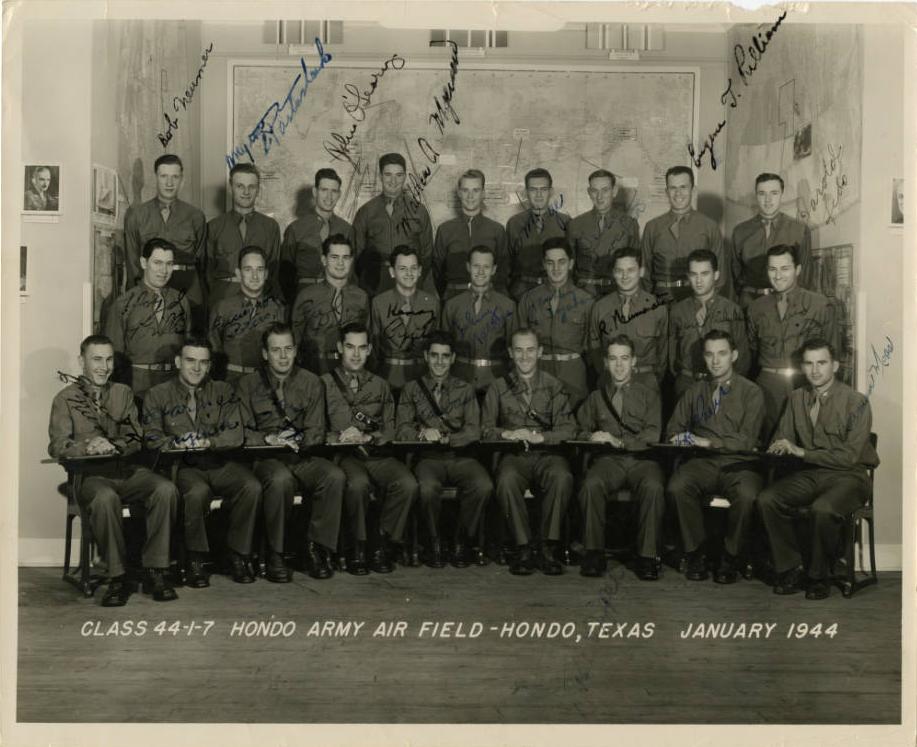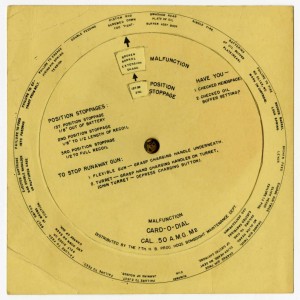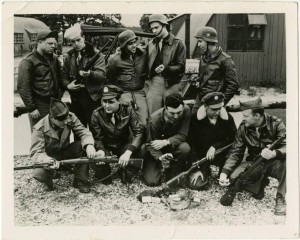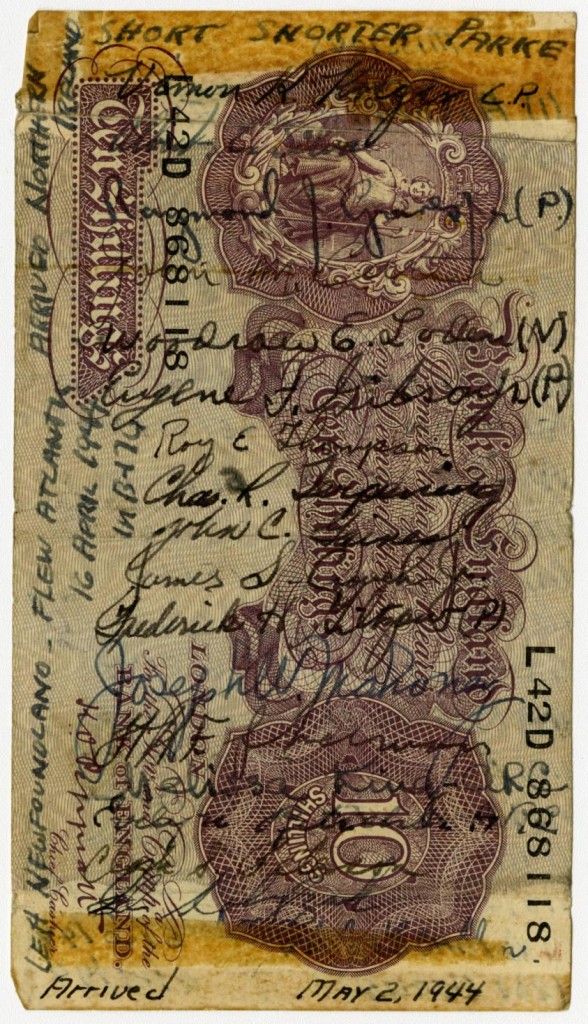New WWII Content on Ohio Memory!

70 summers ago, D-day marked the beginning of the end of World War II in Europe. The anniversary of this pivotal invasion of Normandy has come and gone, but WWII is still on our minds at the Ohio History Connection. As of July, the Charles Walder Parke WWII Collection is digitized and available on Ohio Memory. Parke served as a navigator in the Army Air Forces, the predecessor to today’s Air Force, during the last four years of the war. This collection tells his unique story from both military and personal perspectives, providing a snapshot of just what it was like to be a young lieutenant on B-17 Flying Fortresses during WWII.
Parke was born on July 28, 1924, in Shaker Heights, Ohio. He attended Purdue University for a brief period, but gave up his college education to enlist in the Army Air Forces at 18 years old. Being a pilot was Parke’s original goal, but he soon opted to serve as a navigator instead. Navigators are just as important as pilots on a fighter plane. Without a navigator, the pilot has no idea where to go next, or even which direction he’s facing. One of Parke’s early important destinations was the Navigation School at Hondo Army Air Field in Texas. The collection contains many materials related to his training, including an Army-issued booklet about pilots, navigators, and bombardiers, complete with photographs. Parke graduated from the Hondo school on January 15, 1944.

An abundance of forms, certificates, military orders, and other paperwork in the collection trace Parke’s travels and rising status in the Army Air Forces through 1944. He was shipped around on assignments to bases all over the country, and he gathered bits of history as he went. Ration stamps, identification cards of several kinds, and military newsletters are only a few of the items he kept for posterity. A small number of artifacts in the collection are related to Parke’s use of navigation technology. Understanding the technology on a B-17 bomber was crucial for a navigator, and at the time of the war, much of this technology was new. One document gives instructions for how to use the “flux gate compass,” which must have sounded even more new-fangled to the young Parke than it does to us. Another object seen at right is the “Malfunction Card-o-dial,” a rotating wheel chart informing the plane’s gunners how to diagnose and solve emergency technical problems with the guns.

Parke had a lot to learn in a short period of time, but he learned it well. After being sent overseas to a Royal Air Force base at Bury St. Edmunds, England, he embarked on many successful bombing missions over France and Germany. His military awards include two Bronze Stars, an Air Medal with four Oak Leaf Clusters, and the Distinguished Flying Cross. Amidst it all, he was on board a bomber plane that was shot down over the Basse-Normandie region of France by German planes. The collection includes a recounting of the incident by his plane’s pilot, who managed a safe landing on a Canadian airstrip. Just as telling is the photograph (at left) of the crew after returning triumphantly to Bury St. Edmunds with guns they acquired through some friendly bartering in France.
The personal story behind the military man is just as compelling. Always close to his family, Parke sent a number of “victory mail” letters to his parents and his sister, Betty. The most memorable one is the folded note he delivered himself by makeshift airmail. As he was flying over Cleveland on the way to England, Parke dropped an ice cream box “bomb” containing his note out of the plane in the hopes someone would deliver it to his parents. Against all odds, someone did. Unsurprisingly, the local papers jumped on that news.

Parke kept in touch via letters not only with his family, but several friends stationed in remote locations across the globe. One upbeat letter from a friend assigned to Tehran, Iran, discusses Parke’s recent marriage before he left. A letter from a different friend has a darker tone, the sender making no secret of his anger at the war and the Nazis. Parke’s collection of “short snorters,” or foreign paper bills with fellow crew members’ signatures on them, reveals the camaraderie between airmen who worked and flew together. These documents, along with photographs of himself with his family, his friends playing sports in England, and scenes of the 94th Bombardment Group’s much later reunion, show a side of Parke and of young WWII soldiers that often gets lost in the names and dates.
Much of Parke’s archival materials have been digitized, but there is a separate group of three-dimensional objects in the Ohio History Connection’s museum collections that supplements his story. If you want to find out more about either of the Parke collections, visit Ohio Memory or our Online Collections Catalog.
_______________________________________________
Thank you to Gabrielle Goldfor this week’s post! Gabrielle is a graduate student in the Kent State School of Library and Information Science who recently completedher practicum in the Digital Services Department of the Ohio History Connection.



Leave a Reply
You must be logged in to post a comment.